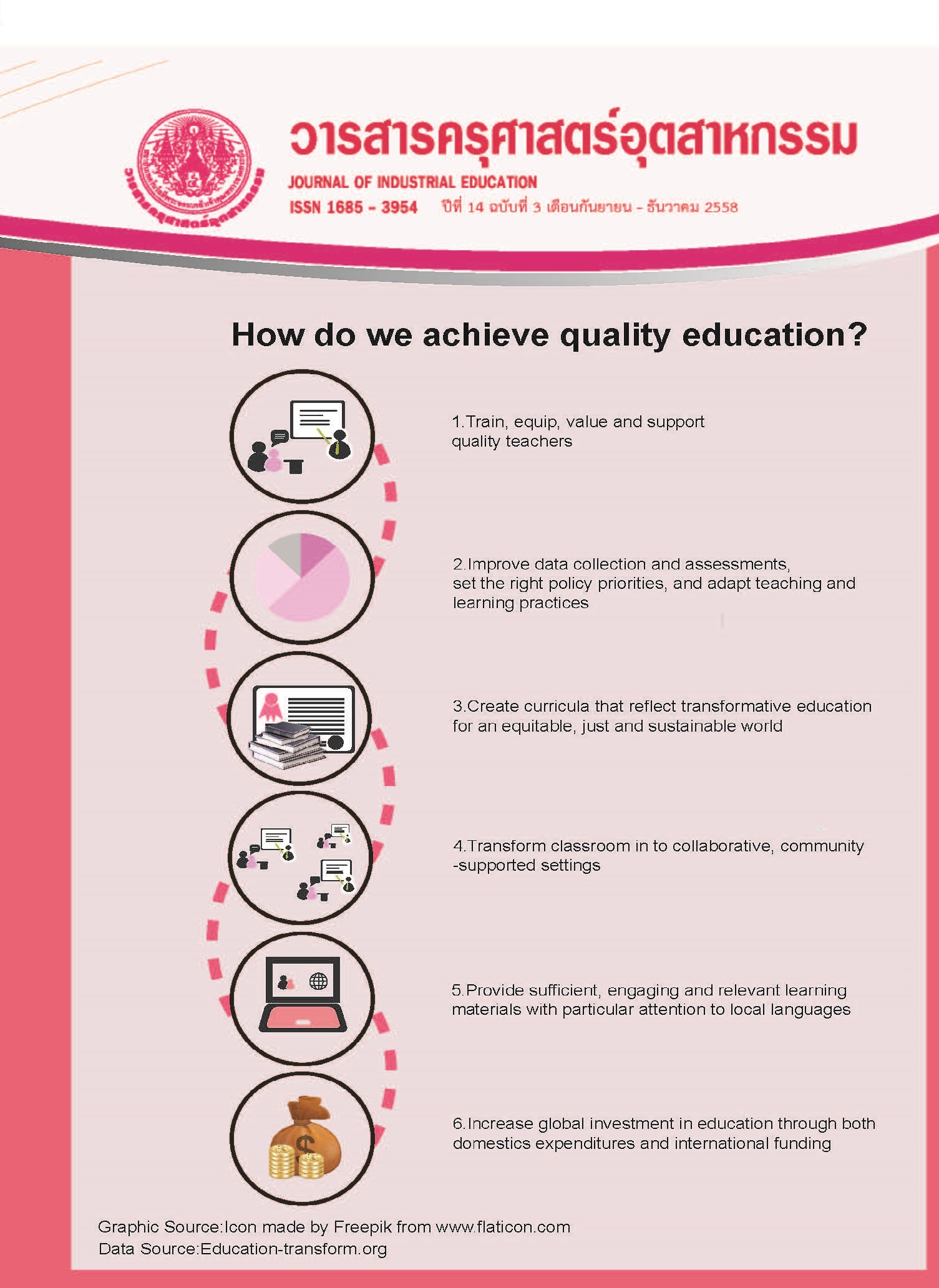Model of Environmental Law Knowledge for Undergraduate
Main Article Content
Abstract
The objective of this research was to develop a causal relationship model of environmental law affecting
environmental conservation behavior through inspiration of public mind. The population consisted of 1,500
undergraduate students from Faculty of Law at Ubon Ratchathani University in the second semester
academic year of 2013. The simple random sampling technique was employed to collect the sample for 404
undergraduate students. The questionnaire was used as a tool for data collection. Structural Equation model
(SEM) was used for model verification.
The results revealed that when considering structural model confirmatory factors of Environmental Law
Knowledge (ELK), it was possible to explain the variation of endogenous factors of Inspiration of Public Mind
(INS) to cause Environmental Conservation Behavior (BEH) with 68.00 percent.
INS had the most effect to BEH with 0.72. Moreover, ELK was possible to be used to explain the variation
of confirmatory factors of INS with 38.00 percent with the effect of 0.64.
Article Details
"The opinions and contents including the words in papers are responsibility by the authors."
"ข้อคิดเห็น เนื้อหา รวมทั้งการใช้ภาษาในบทความถือเป็นความรับผิดชอบของผู้เขียน"
References
[2] Senachai, F. 2009. Citizen Suit in Environmental Case. Thesis for Master of Law. Bangkok: Thammasat University.
[3] Thiengkamol, N. 2012a. Development of A Prototype of Environmental Education Volunteer. Journal of the Social Sciences,7(1), 77-81.
[4] Kamin, P., Thiengkamol, N., Thiengkamol Khoowaranyoo, T. (2014). Environmental Education and Public Mind Affecting Forest Conservation Behavior. Journal of Industrial Education, 13 (3): 181-187.
[5] Intasaro, W. 2007. Proactive Role of the Court in Management of the Environmental Cases: A Case Study of the Office of the Court Region 5 and the Court of Appeal Region 5. Independent study for Master of Art (Political Economy) Chiang Mai: Chiang Mai University.
[6] Rueangsri, V. 2009. Valuation of Environment: Experience from the Courts in United State of America. New Approaches on Development of Environmental Judicial Process. Bangkok: Office of the Judiciary.
[7] Kodmhai.com. 2014. Act of National Environmental Quality Promotion and Maintenance B.E. 2535. Retrieved from 27 Feb 2014 https://www.kodmhai.com/m4/m4-19/H12/M1-11.html
[8] Srikaewtoom, N., Thiengkamol, N.,Thiengkamol, C. 2014. Development Model of Biodiversity Conservation. Environmental Conservation. Journal of Industrial Education, 13 (3), 142-148.
[9] Thiengkamol, N. 2012h. Model of Environmental Education and Psychological Factors Based on Inspiration of Public Consciousness Affecting to Global Warming Alleviation. Mediterranean Journal of Social Sciences, 3(11), 435-444.
[10] Chomputawat, S., Thiengkamol, N.,Thiengkamol Khoowaranyoo, T. 2013ab.Causal Relationship Model of Environmental Conservation Involved Psychological Factors for Agriculturist. European Journal of Scientific Research, 115(1), 147-165.
[11] Preechasillapakul, S. 2003. Project of Review on Knowledge Body of Compensation to Damage from Environmental Pollution. Bangkok: Environmental Litigation and Advocacy for the Want-EnLaw.
[12] Kotchachote, Y., Thiengkamol, N.,Thiengkamol Khoowaranyoo, T. (2013a).Causal Relationship Model of Forest Fire Prevention. European Journal of Scientific Research, 104 (3), 519-532.
[13] Morrasri, P., Thiengkamol, N., & Thiengkamol, T. 2012b. Causal Relationship Model of Little Green Child with Environmental Behavior. European Journal of Social Sciences, 34(2), 177-189.
[14] Prasertsri, N., Thiengkamol, N., Thiengkamol Khoowaranyoo, T. 2013a. Causal Relationship Model of Learning Behavior of Information Technology. European Journal of Scientific Research, 104(3), 475-487.
[15] Thiengkamol, N. 2012i. Model of Environmental Education and Psychological Factors Affecting to Global Warming Alleviation. Mediterranean Journal of Social Sciences, 3(11),427-434.
[16] Scott, M. 2008. Glossary. NASA Earth observatory. Retrieved from 11 Feb 2012 http: //earth observatory.nasa.gov/Glossary/index.php?mode=alpha&seg=e.
[17] Thiengkamol, N. 2012h. Model of Environmental Education and Psychological Factors Based on Inspiration of Public Consciousness Affecting to Global Warming Alleviation. Mediterranean Journal of Social Sciences, 3(11), 435-444.
[18] Preston, B.J. 2005. “The Role of the judiciary in Promoting Sustainable Development: The Experience of Asia and Pacific” Asia Pacific Journal of Environmental Law, 9, 109-212.
[19] Thiengkamol, N. 2012a. Development of A Prototype of Environmental Education Volunteer. Journal of the Social Sciences, 7(1), 77-81.
[20] Pimdee, P., Thiengkamol, N., & Thiengkamol, T. 2012a. Causal Relationship Model of Electrical Energy Conservation. European Journal of Social Sciences, 32(3), 306-315.

